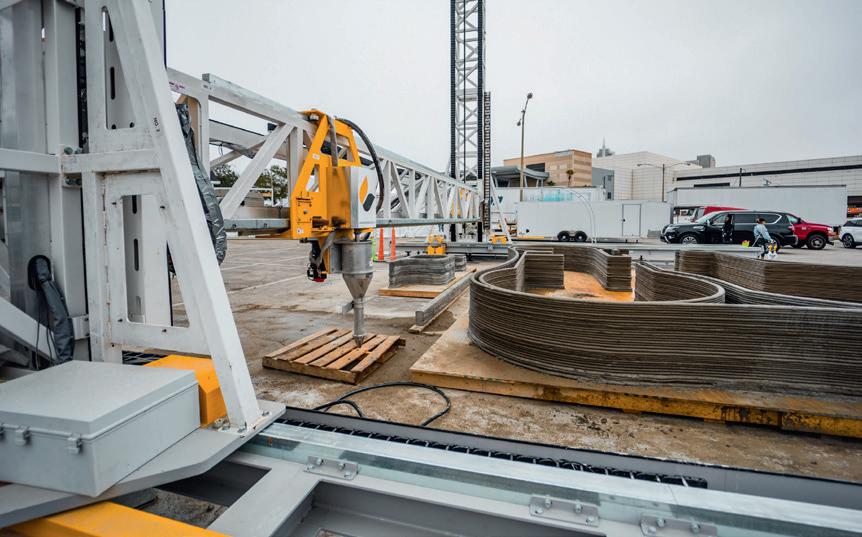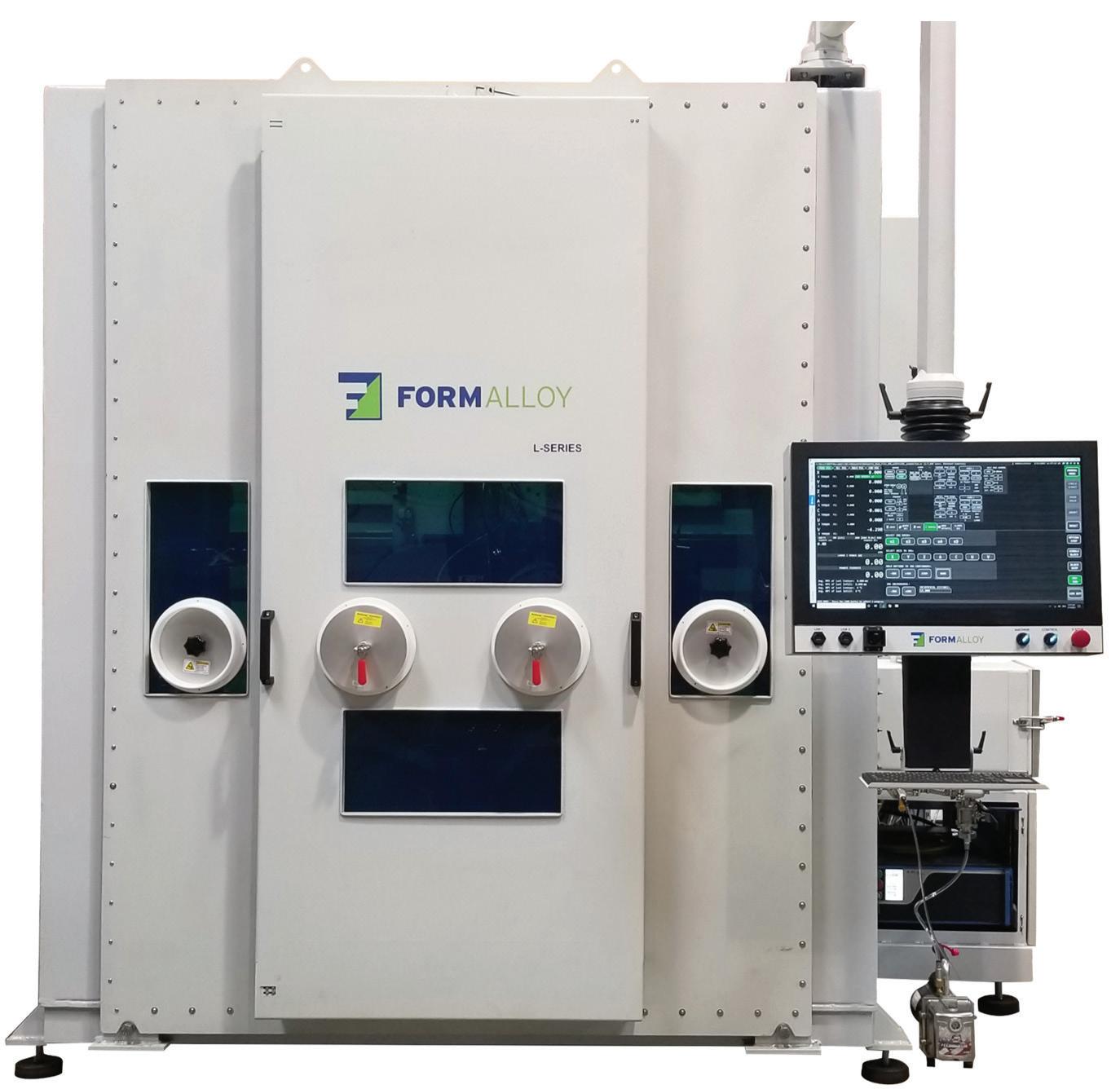
5 minute read
Sam Davies takes a look at recent SPAC activity and what it means for the AM market.





In the public investment market, stocks are traded for cash, and ambitions are chased for a piece of the pie.
Within these choppy waters, there are large companies, small companies, and blank cheque companies. Where the large and small brands demonstrate their profit-making abilities, or at least their growth potential, to be here, the blank cheque firms – officially known as Special Purpose Acquisition Companies (SPAC) – must merge with operating companies inside two years. While most public listings see companies looking for money, the SPAC represents money looking for a company.


Two years ago, some of that money matched with companies in the additive manufacturing (AM) industry. Desktop Metal, Velo3D, Markforged, Shapeways, Essentium, Fast Radius and Fathom all announced SPAC mergers, with Essentium’s agreement being terminated and Fast Radius filing for bankruptcy just nine months later. The other five remain publicly listed, albeit with stocks down anywhere between 50-90% in recent months.

Though the SPAC is not a new phenomenon, it found itself in the limelight in 2021 after a perfect storm of ‘central banks injecting liquidity into the market at low interest rates and the rise of retail trading due to Covid-19 lockdowns,’ per Stephen Butkow, an investment banker at Stifel.

“These vehicles caught the imagination of multiple investor classes because they checked a lot of boxes for a lot of stakeholders,” Butkow tells TCT. “You had companies looking for capital, and investors who are flush with cash and looking for yield. When I say yield, the promise [of SPACs] is that after two years, if we don’t find a transaction, you get your money back with a bit of interest. So, your perspective is, it’s risk free.”
– which enabled ‘earlier stage companies access to cheaper public funding versus simply having to rely on venture funding’ per Butkow – just allowed the company to get there faster.
“The SPAC has reduced, by a massive amount, the barrier in terms of risk for a company to be considered investable,” Velo3D CEO Benny Buller explains. “Before 2020, it was used to list companies that were very low risk, very low growth. But in 2020, with Covid and the drying up of the conventional IPO process, this vehicle was repurposed, and was now used to allow public investors to invest in earlier stages in high growth, high risk companies that until then were only open to [venture capitalists].”
SPACs became a more popular route to a public listing in 2021 compared with a traditional IPO, with many proposed advantages. Companies going public via a SPAC could expect a faster execution, price discovery on the day of the SPAC deal closing as opposed to the day the company lists, and the potential to raise further funds through Private Investment in Public Equity (PIPE) investors. In 2021, 613 companies listed on the stock exchange via a SPAC, up from 247 in 2020 and down to just 76 in 2022. The perfect storm, then, was temporary, but several took advantage. For Velo3D, it had been the aim of the company to go public before it had even launched its Sapphire metal 3D printing system in the summer of 2018. The rise of the SPAC
“[But] like anything in Wall Street,” Butkow says, “it got overdone with both companies and investors looking to run into an overheated market.”

Many of the factors that created the perfect storm Butkow referred to – in particular the low-rate environment and the Covid pandemic – have changed significantly.
“When the rate environment went upside down,” Butkow says, “we went from a period of almost no cost of money to a real cost of money.
The yield that the SPAC structure offered in a low interest rate environment no longer became attractive to investors in the new raising rate environment. It is common to see growth stocks do better than cash flow generating and dividend paying stocks in a low-rate environment. That dynamic changed and the demand for high growth stocks dropped causing a significant drop in valuations.”
Another big influence on this shift in market conditions relates to the PIPE market, which most SPAC deals lean on to provide capital and validate the valuation of the listed company. Even before the valuations with many SPAC deals dropped, the PIPE commitments became increasingly harder to come by. Essentially, as companies tried to jump on the SPAC bandwagon, there wasn’t enough PIPE money to go around, and many SPAC merger announcements ground to a halt.
Thus, an unsuccessful SPAC public listing has been as much down to timing as it has been the company's business model or their potential to scale. The market conditions, Butkow believes, mean SPAC deals will be less common in the shortterm, though he suggests their worth as an IPO alternative has been proven. Therefore, he says, SPAC mergers are likely to one day return, albeit without the fanfare saw in 2021.
For those that have successfully listed via a SPAC, this is where the hard work begins. Velo3D is a company that raised more on the day it went public than it did in its seven-year history prior, but it now has to deliver on its promises and move towards becoming a profitable company. That, Buller believes, is as important for other AM companies, as it is for Velo3D.
“The emergence of large successful companies that will be growing quickly and will be profitable will be very critical to be able to support the next generation of big investments and of companies going public,” he says. “I think that in 2023, the market will be very cautious, and I think beyond that, the market will be looking at, are we actually making money from these companies or not? Right now, the market keeps fragmenting and there are a lot of companies contributing to the growing market, but this is not a market where anyone is making money.”


To navigate these rough seas, public investors need to see the delivery of promises or the evolution of business models or the changing of funding models. If they don’t, businesses will be required to streamline their operations, put themselves up for sale, file for bankruptcy, and in the worst-case scenario, cease to operate. What Butkow thinks is going to happen next is this.
“What you’re probably going to see,” he assesses, “is a period of consolidation amongst the established players in the next two, three years, because of the market realities. You have companies that have the cash right now, you have companies that have some mature-ish businesses or technologies that have broad customer acceptance, but they might be tied to a part of the business strategy that is stuck in the past, that might be burning a lot of cash. You’re going to see [those companies] trying to figure out how to get themselves more profitable, and/or to try to conserve that cash or deploy that cash more attractively.”
This is the critical next step for public additive manufacturing companies. Those who operate on the public market, and do so with falling stock value, have to contest with an increasingly risk-averse market. When sentiment will shift back to a ‘risk on’ market and investors begin to chase the big values, nobody knows, but Butkow believes we’re currently at the ‘lowest, scariest point’ of that trajectory.


















